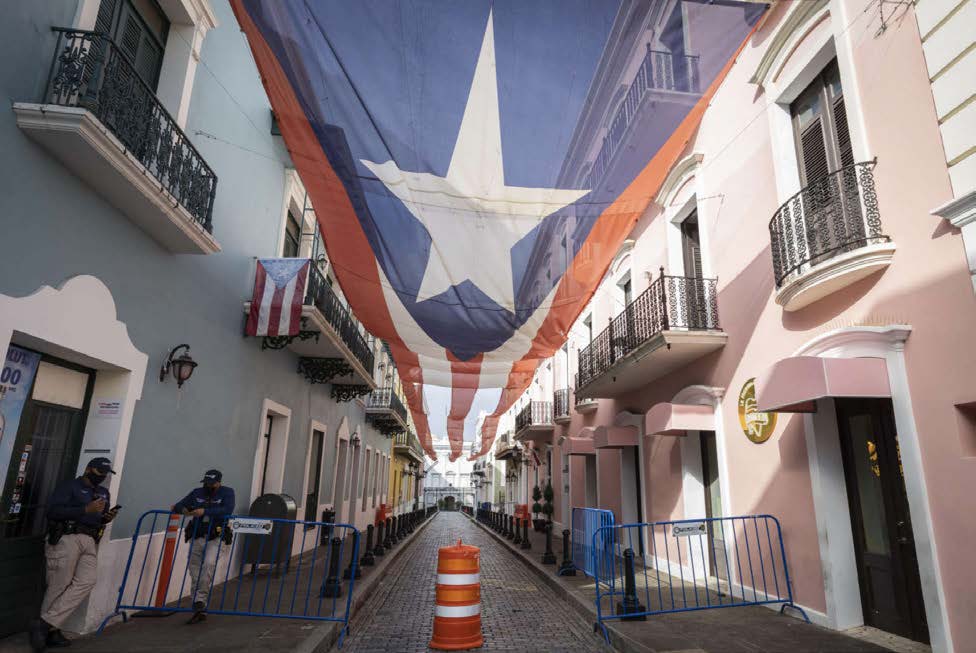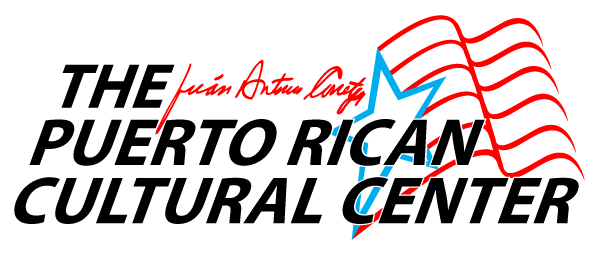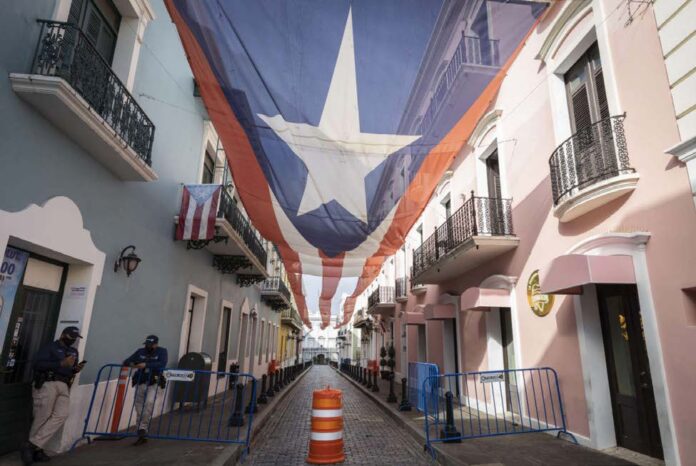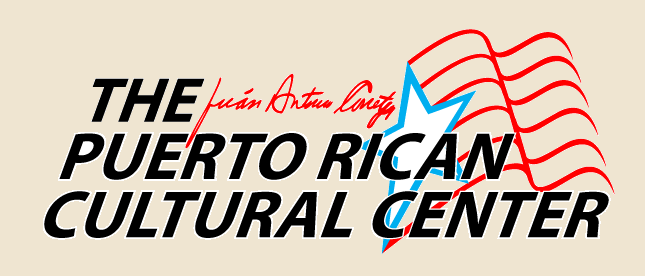[Originally published in Truthout] In his August 2020 eulogy to John Lewis, Barack Obama characterized Puerto Rico and Washington, D.C.’s lack of political representation on the federal level as a civil rights issue. The Democratic Party and some progressives have since called for statehood for Washington and Puerto Rico.
José López is the executive director of the Puerto Rican Cultural Center in Chicago. A long-time supporter of Puerto Rican independence, he also worked to secure the release of successive generations of Puerto Rican political prisoners, including his brother, Oscar López Rivera. In this interview, López refutes the idea that the 2020 plebiscite indicates majority support for statehood and explains why the solution to U.S. colonialism in Puerto Rico is independence. He also argues Puerto Rico’s status is a human rights — not a civil rights — issue.

Margaret Power: How do you analyze the November 2020 elections in Puerto Rico?
José López: There were some very interesting outcomes to the 2020 general local territorial elections on the island. But first, some background.
Local elections have been held in Puerto Rico since 1900, when the Foraker Act established a civilian government following the United States’ 1898 invasion of the archipelago. Since that time Puerto Rico has elected a resident commissioner to represent Puerto Rico in the U.S. Congress. However, the commissioner lacks voting rights. Although Puerto Ricans became U.S. citizens in 1917, they, too, lack voting rights as long as they live in Puerto Rico. They cannot vote for president, senator or congressman. If they move to the United States, they can vote in federal elections. In the November 2020 election, Puerto Ricans cast their ballot for local and municipal officials, in addition to a non-binding referendum on statehood (yes or no).
For decades, there have been two large parties in Puerto Rico, the pro-statehood Partido Nuevo Progresista (New Progressive Party, or PNP) and the pro-Commonwealth Partido Demócrata Popular (People’s Democratic Party, or PPD). Almost every four years, they alternated as governors. After November 2020, this two-party system is literally gone because more than one-third of the electorate chose a third-party candidate. That hasn’t happened in decades, probably not since the 1952 elections when the Partido Independentista Puertorriqueña (Puerto Rican Independence Party, or PIP) got 19 percent of the vote.
It shows that when people went to the polls last November they were really thinking about possibilities. Alexandra Lúgaro, who represented a new, emerging party, Movimiento Victoria Ciudanana (Citizen’s Victory Movement, or MVC), ran for governor and [won] almost 14 percent of the vote. That is a huge amount. The PNP got 33 percent of the vote, the PPD got 32 percent and the PIP got 14 percent; two other candidates received far fewer votes. That means that roughly 35 percent of the electorate did not vote for one of what had been the two major parties.
Five different parties now have representatives in the Puerto Rican House of Representatives and Senate. This is a major change. As a result, there will have to be negotiations to determine who will be the leaders of the House of Representatives and the Senate.
One other important change is the sizable number of women candidates, especially at the levels of mayors and in the House of Representatives and the Senate. For example, Ana Irma Rivera Lassén, an Afro-descent lesbian from the MVC party, was elected to the Senate. And three gay men, from different parties, also won seats. They really changed the makeup of a mostly a heterosexual and male-dominated House and Senate.
Many people have interpreted the non-binding referendum to be a vote for statehood. Do you agree?
It was a non-binding referendum that had no real merit and a single yes or no question, “Should Puerto Rico be immediately admitted into the Union as a state?” That was the only option offered to voters. The statehood movement, which received 623,053 votes (or 52 percent of the vote), claimed it had won. But if you add up the real numbers, you will see that that simply is not the case. Thousands turned in a blank vote on the referendum, or didn’t vote in the referendum at all, possibly because they did not recognize it as legitimate. Theirs was a protest vote. 1,428,075 people voted in the gubernatorial election but only 1,190,399 voted in the referendum. That means that over 237,000 fewer people voted in the referendum than had cast their ballot for governor. If they were for statehood, they would have voted. Compounding it all, the voter turnout was lower than normal. Only about 32 percent of all eligible voters cast their ballot in the referendum, making it the “lowest voter count in history.” So taking all these factors into consideration, we can say statehood did not win.
But 44 percent of Puerto Ricans consciously voted for statehood. To explain this, it’s very important to underscore the fact that the statehood movement put incredible resources into the movement. They launched a blitz that hit the whole island calling for statehood based on notions of equality, civil rights and the idea that if Puerto Rico were a state, then Puerto Ricans would get parity in federal funding for health, education and welfare. The Puerto Rican people are desperate as a result of the 2017 Hurricane Maria and the continuous earthquakes that have plagued the island in the last year. In addition, the non-elected Oversight Board (Junta) created by the U.S. Congress to oversee Puerto Rico’s budget has imposed damaging austerity measures on the people. The real function of the junta has been to ensure the repayment of the unaudited debt to U.S. banks and financial sectors. It has done nothing to ensure the well-being of the Puerto Rican people. As a result, Puerto Ricans are dependent on federal funds, which are not dispersed equally in Puerto Rico. Puerto Rico is ruled under the doctrine of separate and unequal. A lot of people who are dependent on this funding said, “Oh, we are going to lose it unless we become a state.” The campaign for statehood appealed to a desperate population by telling people their livelihood was at stake. That was their prescription for getting approval.
The “no” vote had no physical presence anywhere. A group of people organized a grassroots movement, but it had no access to the local media, which boycotted it. So given that, it’s impressive that statehood got only 48 percent of the vote.
The independence movement in Puerto Rico has a very long history. It is deeply rooted in the 19th-century fight against Spanish colonial domination. The movement seeks total sovereignty from the United States with a vision of providing social and economic justice for the people of the archipelago. The vote for independence went up?
Yes, the vote for independence went up a great deal. If you measure it according to who had the highest individual vote in Puerto Rico, it was María Lourdes Santiago. She’s vice president of the PIP and she won a Senate seat in a national election, with votes from across Puerto Rico. She received 136,679 votes, while the two top vote getters from the PNP received only 81,863 and 80,139 votes respectively.
Why did more people vote for independence in this election?
The vote for independence was not at the level of the other two parties, but the PIP did very well. And the at-large candidates from MVC had a very good showing. This all demonstrates opposition to the current administration and current politics in Puerto Rico. It demonstrates that new developments are taking place in Puerto Rican politics. This year, the PIP had a young candidate, Juan Dalmau for governor, who articulated a clear vision for Puerto Rico. Exit polls and a large number of political commentators show he drew most of his votes from the young people of Puerto Rico.
You said that many of those who voted for statehood were people who felt that a vote against statehood threatened their livelihood. Who are these people specifically?
People from a variety of sectors support statehood, including senior citizens and veterans. Puerto Rico has a huge veteran population. Puerto Ricans who have served in the U.S. Armed Forces don’t get equal treatment as compared to U.S. veterans. There is also an elderly population that sees its livelihood linked to the United States. The statehood movement tells them you will lose this money if you don’t vote for statehood. Their livelihood is put on the line and they don’t see other possibilities. They are a sizable number of the population.
The upper crust of the Puerto Rican elite is pro-statehood while many lower-income people depend on support from food stamps, the Department of Housing and Urban Development and other U.S. agencies. But what Puerto Ricans are not told is that most of what they get back is what has been taken from them in taxes or profits. It’s not as if they are getting these resources or funds as a benevolent act of the U.S. government. Puerto Ricans pay Social Security and Medicare. We don’t get anything from the United States we don’t deserve and, more importantly, that we didn’t earn.
What is the connection between this vote and the protests that occurred in the summer of 2019?
The electoral outcomes and the political divisions show that people are looking critically at the political parties and corruption. The colonial situation of Puerto Rico is becoming more evident. It was very evident in the marches of July 2019 when literally one-third of the Puerto Rican population overthrew the governor. That’s one of the largest percentages of people in the world that have gone into the streets. The protests had a consciousness raising impact on the Puerto Rican electorate.
Some sectors in the Democratic Party have pushed for statehood recently. Who is pushing it and why?
In the last few years, the Democratic Party has been beholden to very wealthy statehood sectors in Puerto Rico, who have poured a lot of money into the Democratic Party. The election of Tom Perez as chairman of the Democratic Party was helped by money statehooders donated to support his bid against Keith Ellison of Minnesota. As people know, there is a clear political division within the Democrats. Ellison represented supporters of Bernie Sanders and the progressive wing, and Tom Perez represented the more conservative sectors. The wealthy statehooders, who are very connected to people and lobbyists in Washington, have donated a lot of money to the Democratic Party.
The other factor is the myth that if Puerto Rico became a state, the Democrats would get two Democratic senators and maybe up to five Democratic Congressman and, as a result, Democrats would control both houses for years. This analysis fails to take into account that the pro-Trump candidate, Jennifer Gonzalez, who is a statehooder, won for resident commissioner in Puerto Rico. Donald Trump poured money into her campaign.
Some Democrats support statehood because the issue is framed in terms of civil rights. At John Lewis’s funeral, Barack Obama said the next step to be taken in terms of civil rights is to guarantee statehood for the District of Columbia and Puerto Rico. But they are two separate cases. Of course, I believe everyone should support statehood for Washington, D.C. It’s an integral part of the United States and the people who live there have no representation in the legislative bodies. They should have the equal rights of any citizen.
Puerto Rico is different because it’s a struggle for human rights. We need to distinguish between civil rights and human rights. The United States government has only one responsibility and that is to support Puerto Rico’s right to self-determination. No political leader in the United States has the right to determine what is right for Puerto Rico. They can have an opinion, but their responsibility is to resolve a historical problem that is informed by colonial relations.
We are a distinct people. A Caribbean/Latin American people. The United States does not treat us as even second- or even third-class citizens. In 1901, the Supreme Court ruled that Puerto Rico belongs to but is not a part of the United States. Puerto Ricans can never really hope to be full citizens. We are ruled by a doctrine of separate and unequal. The United States has used Puerto Rico as an experiment for so many of its policies: neoliberalism, Operation Bootstrap, reproduction. Puerto Rican women were experimented on and used as guinea pigs for the development of the birth control pill. The U.S. military used Puerto Rico as a military experiment station to practice bombings and conducted experiments in Agent Orange before it was used in Vietnam. When we look at all of these things, I don’t know how anyone would want to be part of a country that has treated us like objects.
Some forces in the U.S. progressive movement support statehood for Puerto Rico. What do you think about that?
Europeans created colonialism 500-plus years ago to take people’s lands, labor and resources. They justified colonialism through racism. When we talk about structural racism, in many ways we are talking about colonialism. We need to move away from the idea that Obama and others are putting out in the Democratic Party and address the issue of colonialism and support the historical quest for self-determination.
What would constitute the settlement of the Puerto Rico national question?
Puerto Ricans’ ability to achieve full self-determination so we can self-realize as a fully functioning people on the face of the Earth, so we can share this world with all peoples. The U.S. government needs to pay reparations for colonialism; this is true for Puerto Ricans just as it is true for Black people.
How are Puerto Rican elected officials responding to the push for statehood?
In August 2020, New York Congresswomen Nydia Velázquez and Alexandria Ocasio-Cortez submitted a bill calling on the U.S. Congress to recognize the right of the Puerto Rican people to self-determination. This bill really begins to address the colonial situation of Puerto Rico and a campaign to build support for it is underway.
What are the obstacles facing independence?
The major one is the need for the independence movement to articulate a politics of self-actualization in Puerto Rico. We need to break with U.S. hegemony. As in all relations of subservience, a major problem of colonialism is the problem of internalized colonialism. You have poor people in Puerto Rico getting food stamps, Medicaid and Medicare. They see the check coming from the U.S. Treasury, but they don’t see this money as resources that were taken from Puerto Rico and then returned. The U.S. empire has been hegemonic in Puerto Rico.
Do you see nationalism as a positive force?
Yes. The most reactionary social movement in Puerto Rico is the PNP. It’s homophobic, racist, misogynist. You heard all that in the Rossellógate, the leaked chats between former Puerto Rican Gov. Ricardo Rosselló and his cronies. They were full of profane, homophobic and misogynistic comments and sparked the massive street protests in Puerto Rico in the summer of 2019.
The most progressive politics in Puerto Rico come from those who support independence or sovereignty. When we look at politics that dignify his, her or their identities, it’s the independence movement. My concept of nationalism validates all human relations and addresses issues of climate and environmentalism. If one understands human life as an expression of an ecosystem, then all things in the ecosystem must be healthy, and all of its members have the right to life, liberty and the pursuit of happiness. This means that all expressions of human sexuality, all of the ecological responsibility and other forms of social justice define the nature of the ecosystem.







